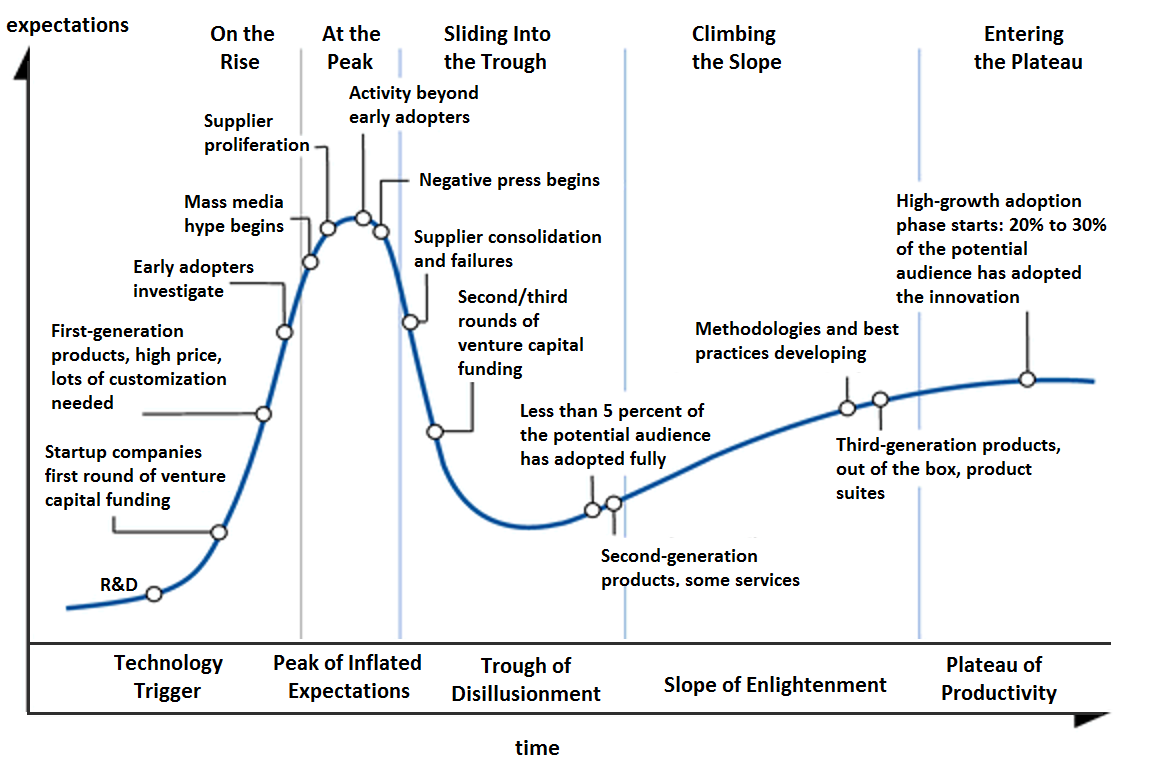Music’s future is intertwined with the development of its media context. The metaverse, a concept describing persistent shared virtual spaces, is a currently much debated topic in order to think about the media future we’re creating. This article is about that future.
The development of technology tends to move through hype cycles and reaches a peak of inflated expectations, before disillusion sets in and a phase of productivity kicks off. In music, blockchain went through such a hype cycle once and now its NFT use case is at the start of another cycle.
I assumed the same of another trending topic in music: the metaverse. I was wrong. Or at least, the Google Trends graph didn’t look as I expected: flat and then a spike in 2020. Instead it looked like this:

I was curious about the spike in interest in 2007. Heydays of virtual world Second Life and Entropia. In particular, I was interested in how people used the word metaverse back then and what ideas they had.
Peaks of inflated expectations are often highly creative phases. There’s an influx of mental energy spent on a new technology or concept and many ideas get tested. Just look at NFTs right now. Over time, some ideas get lost or become implicit and eventually forgotten.
What stood out to me is a 2007 article by futurist Jamais Cascio titled Openness and the Metaverse Singularity. It lays out four potential pathways towards the singularity through various metaverse models based on an axis of simulation vs augmentation and intimate (personal & expression) vs extimate (informational & control).

All of these scenarios occurred simultaneously.
For virtual worlds, you can look at Fortnite and Roblox. Mirror worlds can be interacted with through Google Street View. Augmented reality in this context describes the meta-layer of information about the world around us, e.g. a friend’s review of a coffee place you’re about to enter, but also use cases such as Pokemon Go. Lifelogging describes concepts like the quantified self, but also the footprints you leave behind in Google Maps, smart speakers, and other learning systems that can then help you better in the future.
For each of these media contexts or metaverses, there are music examples:
- Virtual worlds: VR concerts, shows inside games, but also virtual avatars and avatars as pop stars (Lil Nas X x Roblox, Travis Scott x Fortnite, The Weeknd x Wave).
- Augmented reality: geo-located music unlockables (Jonas Brothers x Landmrk, Jeezy x Drops).
- Lifelogging: personalized music experiences based on past data (streaming service UX, smart speakers).
I find mirror worlds a little difficult to clearly define as an existing context for music, especially right now during the pandemic, but perhaps livestreams made with 3D cameras fit the bill.
When we talk about ‘the metaverse’ in 2021, we’re discussing a convergence of trends:
- Gaming & virtual environments going mainstream.
- Development of new virtual economies, possibly underpinned by blockchain technology and tokens.
- Artificial intelligence and its ability to understand users in order to create or provide suitable content and context, and create realistic simulations.
- The Internet of Things with all its connected devices, like smart speakers and smart phones – which provide a pervasive and persistent virtual layer to our physical world which is always turned on.
- Connectivity improvements have meant it’s feasible to jump into virtual worlds from your mobile phone, watch streams, or stream to thousands (or hundreds of thousands) of people.
- Various improvements in hardware & software have made it possible to create beautiful virtual environments, incl in VR, that are highly interactive and customizable.
In the convergence of these (and other) trends also lie the contexts in which we can explore music’s future as a business & creative medium. As we define and design that future, it’s important we embed the ethical dimensions in that process: things like privacy, representation & inclusion, power concentration & dynamics, ecological footprints.
Flashback even further than 2007:
